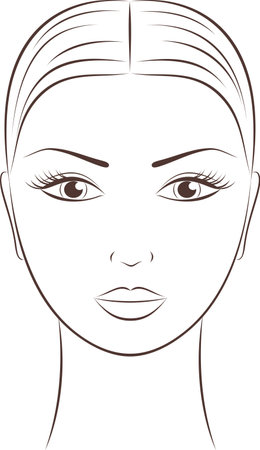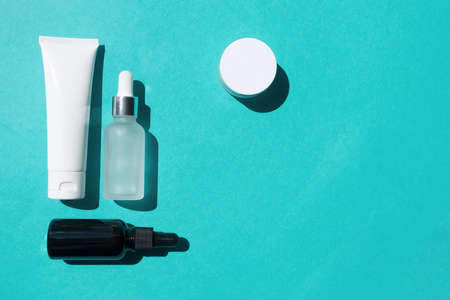Introduction to Chemical Peels in the UK
Chemical peels have gained significant traction across the United Kingdom as a trusted skin rejuvenation treatment, blending clinical efficacy with contemporary aesthetic trends. These procedures involve the application of a chemical solution to exfoliate and ultimately renew the skin, addressing concerns such as uneven tone, fine lines, acne scarring, and sun damage. The popularity of chemical peels in the UK is evident within both NHS dermatology clinics for medical indications and private cosmetic practices for aesthetic enhancement. British patients often seek these treatments for their proven ability to deliver visible results with relatively minimal downtime compared to more invasive options. Common scenarios include individuals looking to revitalise dull skin ahead of social events, manage post-acne pigmentation, or soften age-related textural changes. As interest grows and techniques evolve, it is crucial for patients in the UK to understand evidence-based post-peel care, ensuring optimal outcomes while aligning with local safety standards and patient expectations.
2. Immediate Aftercare: Do’s and Don’ts
Effective post-chemical peel care begins immediately after the procedure. Evidence-based recommendations emphasise not only the protection of sensitive skin but also the importance of adapting routines to the UK’s unique climate and lifestyle factors.
Do’s for Immediate Aftercare
- Keep the skin hydrated: Use a fragrance-free, gentle moisturiser to maintain hydration, especially as central heating can exacerbate dryness in the UK.
- Apply broad-spectrum sunscreen: Even on overcast days, UV exposure in Britain can impair healing. Choose SPF 30 or higher and reapply if outdoors.
- Use lukewarm water: Cleanse with lukewarm (not hot) water to avoid irritation, a key point considering frequent cold weather face washing habits in the UK.
- Avoid strenuous exercise: For at least 48 hours post-peel, refrain from activities that induce sweating, which can aggravate sensitivity and disrupt healing.
Don’ts for Immediate Aftercare
- Avoid harsh skincare products: Steer clear of retinoids, AHAs, BHAs, exfoliants, or products with alcohol until fully healed, as these may cause further irritation.
- No picking or scratching: Peeling is normal post-treatment; resist the urge to touch or peel off flaking skin as it increases infection risk and scarring potential.
- Avoid saunas and steam rooms: Particularly relevant in the UK where such facilities are popular for relaxation—heat can prolong redness and hinder recovery.
- No makeup initially: Refrain from applying makeup for at least 24–48 hours to minimise bacterial contamination and allow optimal healing.
Quick Reference: Do’s & Don’ts Table
| Do’s | Don’ts |
|---|---|
| Hydrate with gentle moisturiser | Avoid exfoliants/actives |
| Use broad-spectrum SPF 30+ | No picking/flaking skin |
| Lukewarm cleansing only | No sauna/steam room visits |
| Avoid strenuous exercise | No makeup for first 24–48 hrs |
Key Considerations for the UK Climate & Lifestyle
The often damp, cool British weather may tempt patients to use hotter water or seek warmth in saunas—both should be avoided. Additionally, unpredictable sun exposure means diligent sunscreen use is essential even on cloudy days. Adjusting your routine with these evidence-based steps will support safe and effective recovery following a chemical peel in the UK context.

3. Skin Protection and Sun Care
Chemical peels temporarily compromise the skin’s natural barrier, making it significantly more vulnerable to ultraviolet (UV) radiation. Evidence consistently shows that diligent sun protection is crucial after a peel to prevent pigmentation changes, delayed healing, and long-term skin damage. In the UK, although sunlight may appear less intense compared to other regions, UVA and UVB exposure remains substantial year-round—even on cloudy days. Therefore, post-peel patients must prioritise broad-spectrum sunscreen use as part of their recovery routine.
The Importance of UV Protection Post-Peel
Following a chemical peel, your skin is more susceptible to sunburn and hyperpigmentation due to increased photosensitivity. Clinical guidelines recommend applying a broad-spectrum sunscreen with at least SPF 30 every morning, regardless of outdoor plans or weather conditions. For those spending extended periods outside, reapplication every two hours is essential. Covering treated areas with hats or protective clothing further reduces risk.
Access to Broad-Spectrum Sunscreen in the UK
The UK high street offers a wide range of broad-spectrum sunscreens suitable for post-peel care, including formulations for sensitive and compromised skin. Look for products labelled “broad-spectrum” to ensure both UVA and UVB coverage. Fragrance-free and non-comedogenic options are widely available from major pharmacies such as Boots and Superdrug, as well as online retailers. Consider consulting your aesthetic practitioner for recommendations tailored to your skin type and treatment depth.
Tailored Sun Care Advice
UK dermatologists advise integrating sun protection into daily routines year-round—not just during the summer months. Beyond sunscreen, avoid direct sun exposure during peak hours (11am–3pm), seek shade when possible, and use physical barriers like sunglasses and wide-brimmed hats. For patients with darker skin tones or pre-existing pigmentary concerns, personalised advice from a skincare professional can help minimise complications and maximise results post-peel.
4. Managing Common Side Effects
After undergoing a chemical peel, it is normal to experience certain side effects such as redness, peeling, and increased sensitivity. Recognising and managing these reactions effectively is crucial for optimal recovery and achieving desired outcomes. Below, we break down how to identify typical post-peel responses and offer evidence-based management strategies with products readily available in the UK.
How to Identify Typical Post-Peel Reactions
- Redness: Most patients will notice erythema (redness), which can last from a few hours up to several days depending on the depth of the peel.
- Peeling: Flaking or shedding of the skin typically occurs 2–4 days post-treatment and may persist for up to a week.
- Sensitivity: Treated areas often feel tender or tight and may react more strongly to environmental factors such as wind, sun, or pollutants.
Evidence-Based Management Strategies
| Side Effect | Recommended Action | UK-Specific Product Suggestions |
|---|---|---|
| Redness | Avoid heat exposure; apply a cooling gel; refrain from using active ingredients (e.g., retinoids, AHA/BHAs). | La Roche-Posay Cicaplast Baume B5, Eucerin Aquaphor Soothing Skin Balm |
| Peeling/Flaking | Do not pick or pull at peeling skin; use a bland emollient to support barrier repair. | Cetaphil Moisturising Cream, Aveeno Dermexa Emollient Cream |
| Sensitivity/Tenderness | Avoid fragranced products; opt for hypoallergenic, gentle cleansers and moisturisers; wear SPF daily. | CeraVe Hydrating Cleanser, Altruist Dermatologist Sunscreen SPF 50 |
When to Seek Medical Advice?
If you notice intense swelling, blistering, signs of infection (such as pus or increasing pain), or prolonged redness beyond ten days, consult your practitioner or GP promptly.
Key Takeaway:
The proper identification and management of common post-peel reactions not only ensure patient comfort but also help prevent complications. Utilising trusted UK pharmacy brands can make aftercare accessible and effective for all patients.
5. Long-term Recovery and Maintenance
Maintaining healthy, resilient skin after a chemical peel requires ongoing care tailored to both clinical evidence and UK-specific skincare trends. Following the initial recovery phase, it is essential to establish best practices that support sustained results while minimising risk of irritation or complications.
Moisturising Routines for Post-Peel Skin
Consistent hydration is crucial for long-term skin barrier repair. Evidence suggests using fragrance-free, ceramide-rich moisturisers—widely available in UK high street pharmacies—can reinforce skin’s natural defences and reduce post-peel dryness or flaking. Products such as CeraVe, Eucerin, or La Roche-Posay are popular choices amongst British dermatologists and consumers alike.
When to Resume Routine Actives
It is advisable to wait at least 10–14 days before reintroducing active ingredients like retinoids, vitamin C, or exfoliating acids. Start with lower concentrations and increase gradually, monitoring for any signs of irritation. Consulting with your aesthetic practitioner or pharmacist can provide personalised guidance in line with NHS recommendations.
Aligning with UK Skincare Trends
The UK skincare community places strong emphasis on gentle routines and barrier support over aggressive treatments. Incorporate SPF 30+ daily (even during cloudy weather), as photo-protection is particularly important post-peel. Layering lightweight hydrating serums before moisturiser and opting for minimal, multi-purpose products aligns with current British trends favouring simplicity and efficacy.
By adopting these evidence-based practices and staying attuned to local advice, patients in the UK can foster optimal long-term outcomes following a chemical peel while integrating seamlessly into their everyday routines.
6. When to Seek Medical Advice
While most patients experience only mild redness and peeling following a chemical peel, it is crucial to recognise when symptoms may indicate a complication requiring professional medical attention. The NHS recommends that you remain vigilant for certain warning signs after your procedure.
Signs That Require Immediate Attention
- Severe or worsening pain: Discomfort should be mild and manageable; escalating pain may signal infection or deeper skin injury.
- Extensive swelling or blistering: Small blisters can occur with deeper peels, but widespread or fluid-filled blisters are not normal and should be assessed.
- Pus or foul-smelling discharge: This could indicate a bacterial infection, especially if accompanied by increased redness or warmth around the treated area.
- High temperature (fever): A persistent fever post-peel may point to systemic infection and warrants prompt medical review.
- Sudden changes in vision or eye involvement: If chemicals have come into contact with your eyes, urgent evaluation is required.
NHS Care Pathways for Post-Peel Complications
If you notice any of the above symptoms, contact your GP as soon as possible for an initial assessment. For out-of-hours care, call NHS 111 for advice on whether you should be seen urgently. In cases of severe reactions—such as rapidly spreading redness, severe facial swelling, difficulty breathing, or suspected anaphylaxis—attend your nearest A&E department without delay.
Useful UK Health Resources
Summary
Staying alert to warning signs and knowing when to seek help ensures safe recovery after a chemical peel. Utilise NHS resources and consult your healthcare provider promptly if you have concerns about your healing process.

